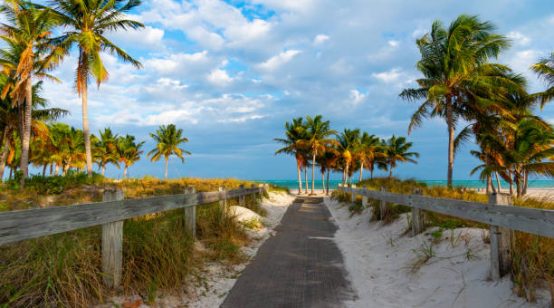
Everyone “knows” that nuclear is expensive. We also know that existing reactors produce clean electricity very cheaply. So which is it, expensive or cheap? It depends how one calculates the value.
Levelized Cost of Electricity, or LCOE, is a figure used to compare energy costs on a supposedly “levelized” way. Sounds fair, right? We calculate the LCOE for all energy sources and then build the cheapest one. Problem solved!
Alas, it is not that simple. LCOE is a black, opaque box that can give basically any answer one wants. To understand the results of any given LCOE comparison, one needs to read the fine print – what assumptions went into the calculation and why – very carefully.
Let’s take a couple examples of those assumptions. For instance, is climate change priced in, and how? At this point, almost any result that says “we should just burn more fossil fuels” means that climate change is not priced in, at least not in a meaningful way. What about a power plant’s lifetime? How long do we assume that different power plants or turbines last? And finally, how do we value today the energy produced 20 or 40 years in the future, as decreed by the discount rate we use? For a long-term up-front investment like a nuclear plant, we can make it seem as expensive as we want, simply by adjusting these parameters. And we often do. But what is the actual cost of nuclear power?
Nuclear cost for dummies
Let’s do a “back-of-the-envelope” calculation to find out. Essentially, there are two types of costs: capital investment (including financing costs) and operation & maintenance (O&M) costs. Let’s take the European Pressurized Reactor, EPR, as an example, and make the following ballpark assumptions:
- The total capital investment cost, with financing costs included, is in the neighbourhood of €15 billion. Perhaps €10 billion for the construction period, and €5 billion in further interest payments down the road. It could be a couple billion more or less, depending, but this is the rough ballpark.
- Nuclear O&M costs, including fuel, waste and decommissioning funds, are in the neighbourhood of €20 per MWh. Let’s top that to €25 per MWh to ensure we are on the safe side and have ample money for refurbishing and proper maintenance down the road.
Now, the EPR is a 1.6-GW nuclear reactor that will produce on average over 12 terawatt hours of electricity per year (almost as much as the entire Danish wind power fleet). It has a planned initial lifetime of 60 years, which can likely be increased to 80 years, or even longer. Let’s take a round number and say that during its lifetime, the EPR will produce 1,000 TWhs of electricity. At 12.5 TWhs per year, that will take 80 years.
For those 1,000 TWhs, O&M costs are €25 billion, or €25 per MWh. And when the total investment cost of 15 billion euros is spread over, it becomes €15 per MWh. Adding it all up, nuclear costs €40 per MWh. That is not a bad deal for dispatchable, 24/7 low-carbon electricity. The Germans pay over €60 per MWh just for the feed-in tariffs[i] that the government distributes for renewable energy producers. In total, their electricity bill climbs to around €300 per MWh with all taxes and grid costs included. It is no wonder many Germans prefer gas for heating!
The cost of sustainability
So why do we see nuclear costing near €100 per MWh in some reports? There is one overwhelming reason: discounting. It’s a complex topic, but to simplify: When economists and investors compare the net present value of an investment, they discount the future production value at some annual rate, often between 3% and 10%.
When discounted, electricity (or anything else, for that matter) produced 10 or 20 years from now has only a small fraction of today’s value. As can be seen in the table below, a discount rate of just 7% will mean that production 20 years from now (only a quarter or a third into the nuclear reactor’s total lifetime) will have only 26% of the value accounted for today. Anything produced after 30 or 40 years has practically zero value, even with low discount rates. Using discounting might be prudent economic thinking, as we always prefer the present to the future, but with large issues like clean energy and climate change, it is also an ethical choice we make towards future generations.

By setting the discount rate to several percentage points, the comparable LCOE of nuclear energy can easily be doubled or even tripled. The Intergovernmental Panel on Climate Change Working Group III chapter 7 on Energy Systems[ii], for example, used 10% when comparing the LCOE of different energy sources[iii]. Lowering that rate from 10% to a more modest 1.4% dropped nuclear’s LCOE from $97/MWh to around $42/MWh. That is a drop of over 50%, and close to my “back-of-the-envelope” calculation above.
The discount rate is a powerful tool, and there are grounds for using it in some cases, such as when investments are compared from a purely monetary perspective. But I argue that discounting should have a minimal role in society-level sustainability and climate discussion. Why? Because discounting the future generations does not fit within the idea of sustainability; it is, in fact, the very opposite of it. We are supposed to be leaving the earth a better place for our descendants. Discounting is one of the economic mechanisms that can make this practically impossible.
Most people also don’t recognize that we are doing discounting (or they might not understand the principle) because the chosen rate for a particular report or scenario, and the reasoning behind it, is almost never presented clearly or discussed openly. As a society, we should recognize that discounting at higher rates leads us to prefer consuming more fossil fuels today instead of building nuclear, wind, or solar. Fossil fuels give us immediate benefits (profits) and leave problems (costs) for the future, where they don’t seemingly matter anymore.
[i] The EEG for 2018 is €67.1 per MWh, which is used to pay for the renewable energy act feed-in tariffs. https://www.cleanenergywire.org/news/cdu-greens-odds-over-coal-exit-industry-worries-about-co2-price/eeg-surcharge-decrease-slightly-2018-renewables-organisation
[ii] http://www.ipcc.ch/report/ar5/wg3/
[iii] They used a weighed capital interest rate, which does basically the same thing. More discussion on this here: https://passiiviidentiteetti.wordpress.com/2014/04/22/discounting-and-costs-part-2-ipcc-wgiii-report-on-mitigation/






It’s an remarkable post in favor of all the web visitors;
they will obtain advantage from it I am sure.
Small Modular Reactors [SMRs] are the future of nuclear power. 2026 is the date to mark the resurgence of nuclear power and signal the beginning of the end for renewable technologies.
Strangely, quite a number of UK bodies are gearing up to almost sideline nuclear in their 2030/2050 plans on the basis of high costs and the public perception of safety problems. What they don’t seem to realise is:
Within 8 short years, in 2026, the breakers will be thrown on the first NuScale 720 MW nuclear power plant [npp], comprising of 12 x 60 MW Small Modular Reactors [SMRs], at a cost of £3173/kW, compared to 3,200 MW Hinkley’s [current] cost of £6,125/kW. The customer is signed up and the site selected – it’s: SMRs ARE GO DATE!
Close on NuScales tail will be the GE-Hitachi 300 MW BWRX-300 and they’re already publicising £2,450/kW for the FOAK and £1,511/kW for the NOAK – that’s 75% less, per installed kW, than the cost of Hinkley.
860 MW Triton Knoll Offshore Windfarm will deliver just about the same amount of intermittent electricity every year as the 24/7 electricity generated every year by a GE-H BWRX-300. BUT [and there are a couple of big buts]:
Triton Knoll will cost £2000 million, pay dividends for its 25 year lifespan and and create very few quality jobs.
The FOAK BWRX-300 would cost £735 million, pay dividends for its 60 year design life and create many quality jobs for 3 generations.
The ‘birth’ of SMRs will make investment in any form of renewables technology the realm of lunatics, hanging on to their fears of dangerous npps and sure in the knowledge of what Greenpeace is telling them – that ‘when’ Hinkley explodes, all of SW England will be uninhabitable for 10,000 years.
Well that fallacy dies in 2026 too. All existing and ‘New Nuclear’ power plants are the safest electricity generating technology the UK [and the world] has ever employed, with their 10 mile radius Emergency Planning Zone [EPZ]. SMRs are 100s or even 1,000s of times safer and they will have their EPZs at the site boundary fences.
These sites are the size of a modest out-of-town retail park and you could be picnicking safely outside of the boundary fence, while an accident/incident is being attended to on the site itself.
2026 marks the date when the Greenpeace generated ‘nightmare’ of the humongous poisonous/radioactive cloud that can wipe out families, friends and communities in the blink of an eye, will be no more. 2026 will mark the date when all resource-wasting and environmentally-destructive renewables technologies will start to wither on the vine.
Won’t those 2030/2050 plans look myopically stupid then!
Mr. Partanen, thanks for this insight into the wild and somewhat mysterious world of financial assessments. It would appear that any energy source that is heavily front-loaded with capital costs (like nuclear) would be at a significant disadvantage in comparisons with other energy sources when using the Net Present Value (NPV) as the governing parameter (due to discounting rate assumptions). Question #1–what goes into determining what discounting rate to be used? Per your article, the discounting rate assumption can result in dramatically different NPV values, and therefore drives the results. Question #2–How is the NPV directly tied to the Levelized Cost of Electricity LCOE) concept (or are they actually one in the same)? Question #3–to factor in our responsibilities to future generations in maintaining our environment and in assuring adequate clean energy supplies, what specific values of discount rates would you recommend be used in the NPV/LCOE evaluations to fairly compare energy sources, and why?
[…] an alternative in my thesis. After reading again about the LCOE in an article by Rauli Partanen (Click here!), an author I like talking to when I now finally want to write out my […]
[…] the return of investment should be (note, read more from Rauli Partanen on Energy Reporters on why quick profits are often at odds with environmental goals) and are very optimistic about renewable capacity factors, which skews the price data strongly in […]
As someone who worked on the finance side (indirectly), what do you propose to “fix” this problem? Everyone putting up the money is ultimately going to discount to whatever rate they feel is appropriate, and if they don’t like the answer, they won’t put up the money. End of story.
So, should we force banks to give out free money? Raise a new tax to pay investors the difference in RoR? Or are you hoping to convince the entire financials world to give up their standard tools?
I see a lot of “problem” here, and not a whole lot of “solution”.
Funny that you forgot to mention the decommissioning costs… put them in and use a small discount rate and let’s see what happens…